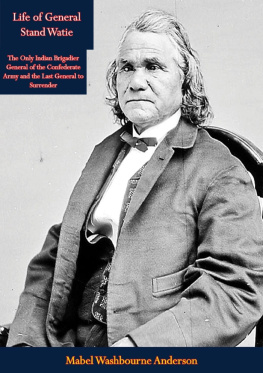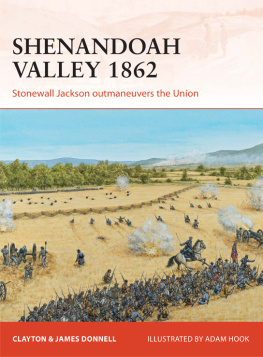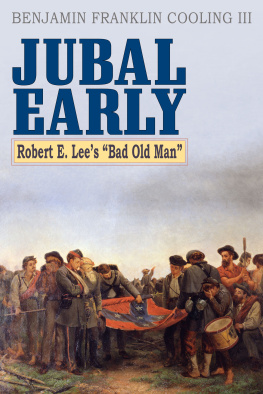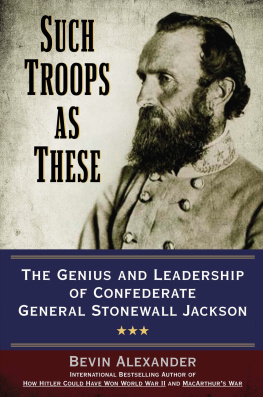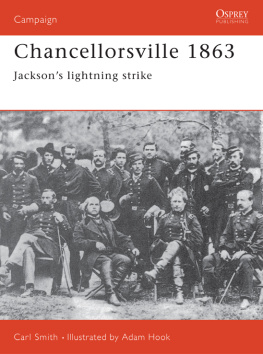Stonewalls Prussian Mapmaker
CIVIL WAR AMERICA
Gary W. Gallagher, Peter S. Carmichael,
Caroline E. Janney, and Aaron Sheehan-Dean, editors
This book was published with the assistance of the
Fred W. Morrison Fund for Southern Studies of the
University of North Carolina Press.
2014 T he Universit y of North Carolina Press
All rights reserved. Designed by Sally Scruggs and set in Miller by Tseng Information Systems, Inc. Manufactured in the United States of America The paper in this book meets the guidelines for permanence and durability of the Committee on Production Guidelines for Book Longevity of the Council on Library Resources. The University of North Carolina Press has been a member of the Green Press Initiative since 2003.
Jacket illustration of Oscar Hinrichs and title page illustration of Hinrichs after the Civil War both from the Henson Family Properties; courtesy of the Jim Henson Company Archives.
Library of Congress Cataloging-in-Publication Data
Hinrichs, Oscar.
Stonewalls Prussian mapmaker : the journals of Captain Oscar Hinrichs / edited by Richard Brady Williams ; foreword by Robert K. Krick.
pages cm. (Civil War America)
Includes bibliographical references and index.
ISBN 978-1-4696-1434-2 (cloth : alk. paper)
ISBN 978-1-4696-1435-9 (ebook)
1. Hinrichs, OscarDiaries. 2. United StatesHistoryCivil War, 18611865Personal narratives, Confederate. 3. Confederate States of AmericaArmyOfficersDiaries. 4. CartographersConfederate States of AmericaDiaries. 5. German American soldiersConfederate States of AmericaDiaries. 6. SoldiersConfederate States of AmericaDiaries. 7. United StatesHistoryCivil War, 18611865Cartography. 8. United StatesHistoryCivil War, 18611865Maps. I. Williams, Richard Brady, editor. II. Title.
E605. H63 2014
973.782092dc23
[ B]
2014010105
181716151454321
Thanks to the descendants of Oscar Hinrichs who have preserved
his legacy; Rosanne Thaiss Butler, a researcher extraordinaire;
and Mary Jo Williams, my wife and best friend
Contents
Figures and Maps
Figures
Oscar Hinrichss Guards and Patrols Pass, April 16, 1865,
Oscar Hinrichss wartime journals,
Reverend Harvey Stanley,
Surrattsville, the home of John H. Surratt,
Elizabeth City and the Albemarle Sound,
Richard S. Ewell,
Stonewall Jackson in Winchester, Va., 1862,
The Battle of Malvern Hill,
The Confederates crossing the Potomac River,
Jedediah Hotchkiss,
Mine Run,
John B. Gordon,
Oscar Hinrichss journal drawing: Outside Lynchburg, Va.,
Oscar Hinrichss journal drawing: Natural Bridge, Va.,
General Jubal Anderson Early,
Henry Kyd Douglas shortly after the close of the war,
John Pegram,
Philip H. Sheridan,
Hetty Cary, fiance of John Pegram,
Confederate works at Hatchers Run,
A Confederate cipher,
Richard H. Anderson,
Hinrichss map within his journal entry for March 31, 1865,
The Evacuation of Petersburg,
The Last Review,
Exterior View of the Cells in which the Conspirators Are Confined,
Mary Stanley Hinrichs,
Oscar Hinrichss postwar map of CSA fortifications along the Rappahannock River,
Maps
Oscar Hinrichss Escape through Southern Maryland,
Jacksons 1862 Shenandoah Valley Campaign,
The Seven Days Battles,
Cedar Run to Second Manassas, Antietam, and Shepherdstown,
The Battle of Chancellorsville,
The Gettysburg Campaign,
The Battle of Mine Run,
The Overland Campaign, Wilderness to Cold Harbor,
The First Half of Earlys 1864 Valley Campaign,
The Second Half of Earlys 1864 Valley Campaign,
CSA Fortifications in Petersburg with Focus on Hatchers Run, White Oak, and Five Forks,
Retreat to Appomattox,
Foreword
European officers who served in the Army of Northern Virginia, or who visited it at length, afford a valuable perspective on the famous army and its leaders and campaigns. With the publication of his wonderful contemporary account, Oscar Hinrichs moves to the head of that foreign legion.
Justus Scheibert, Fitzgerald Ross, Heros von Borcke, and others of similar origin sometimes enjoyed a vantage point as useful as Hinrichss, but none of them remained in place for anything remotely like his tenure. The combination of an assignment at important headquarters and service that covered several years gave the Prussian cartographer a unique advantage as narrator. His smart and literary sensibilities, and his diligent attention to his record of events almost every day, augment the other attributes to constitute an enormously important primary source.
Oscar Hinrichs spent virtually his entire Confederate career on duty at the headquarters of some component of the Second Corps of the Army of Northern Virginiathen eventually in the corps commanders establishment itself. That brings to mind the classic contemporary accounts by Jedediah Hotchkiss and G. Campbell Brown. The Hinrichs narrative deserves as much attention as those fine sources have earned and makes with them an invaluable trilogy of spotlights illuminating the corps and its officers.
Fascinating descriptions, opinions, and analyses brighten almost every page of the journals. The European undertones in the language, and in some opinions, spice Hinrichss observations.
Some passages address important military operations, widely reported and discussed elsewhere. Hinrichs also remarks at length on some engagements less well known. His thoughtful summary of Mine Run (Hinrichs calls the engagement Paynes Farm), for instance, deserves attention.
Entries in the diary and journal provide details on temporary organizational adjustments. Hinrichs describes, for one example, the shuffling within the Second Corps in mid-May 1864, necessitated by dire losses at Spotsylvanias East Angle and Bloody Angle. The ad hoc organizations that resulted are not well explained anywhere else.
Amusing and whimsical anecdotes intervene between deadly serious portions of the journals. The day before the Third Battle of Winchester, Hinrichs watches the renowned memoirist Henry Kyd Douglas ride away for an outing with his sweetheart. Douglas had hopes of having a good start over the corps commander, the sometimes outspokenly misogynist General Jubal A. Early, who is also crazy about that woman. Douglas was doomed to disappointment, Hinrichs prophesies, because old Early has already too great an advantage.
The journals provide ample evidence that Captain Hinrichs quickly engaged his comrades, whether positively or not. A great strength of his work is how many individuals he describes without inhibition. He likes more than he dislikes among the people with whom he interacts. In neither category did Victorian conventions prompt him to be discreet in his private forum. That attitude redounds decidedly to the benefit of modern readers. The reticence to criticize that impairs many narratives from that era did not afflict Oscar Hinrichs.
Although much more in these pages is salutary than hostile, negative comments in the journal probably will be those most often quoted because of their frankness. Braxton Bragg is an old woman. General Edward Johnson, freshly captured at Spotsylvania, the Yankees may keep. General George H. Steuarts reputation is a very poor one.... [H]e was not the man for this division. General William B. Taliaferro is a man lacking much.... Thus wags the world. And a Tar Heel colonel is like most N.C. officers not worth much.


